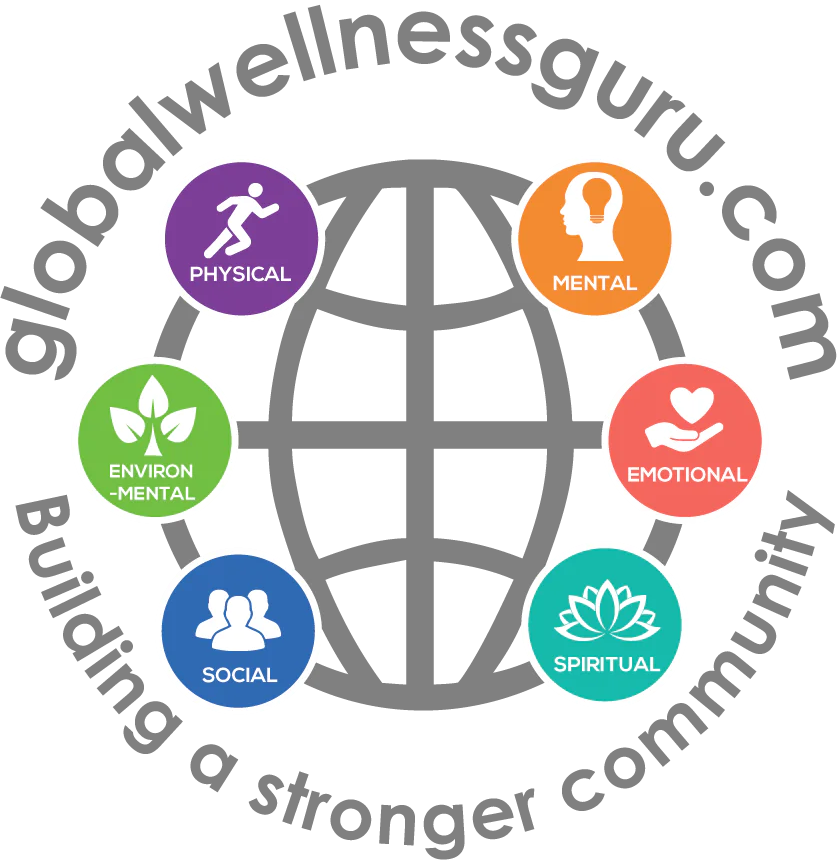The Ancient Smile Workout: How Expressions Impact Mood
Introduction
Have you ever noticed how a bright, genuine smile can instantly lift your spirits? Or how a furrowed brow and grimace can make you feel tense and irritable? The expressions we make with our faces don’t just reflect our inner emotional state – they can actually shape and reinforce those very feelings.
This powerful mind-body connection between facial expressions and emotions has its roots in ancient traditions and philosophies. But it’s only in recent decades that modern science has begun to unlock the fascinating mechanisms behind this phenomenon, often referred to as the “facial feedback hypothesis.”
So put on a happy face and get ready to explore the incredible impact our expressions can have on our overall well-being. This blog post will take you on a journey through the ancient origins of the smile workout, the latest scientific findings, and practical tips for harnessing the power of facial expressions to boost your mood and transform your life.

The Science Behind the Smile Workout
Modern research has not only confirmed the ancient wisdom surrounding facial expressions and emotions but has also shed light on the fascinating neurological and physiological mechanisms at play.
One of the key theories underpinning the facial feedback hypothesis is the idea of “embodied cognition.” This concept suggests that our thoughts, feelings, and behaviors are deeply intertwined with the physical sensations and movements of our bodies[2].
When we make a particular facial expression, such as a smile or a frown, it triggers a cascade of neural and muscular responses that can influence our emotional state. For example, smiling activates specific muscles in the face that send feedback signals to the brain, which are then interpreted as feelings of positivity and joy.
Numerous studies have provided compelling evidence for the facial feedback hypothesis. In one famous experiment, participants were asked to hold a pen between their teeth (which mimics the muscle movements associated with smiling) or between their lips (which mimics a frown). Those who held the pen between their teeth reported feeling happier and found cartoons funnier than those who held the pen between their lips[1].
Another study found that individuals who were trained to smile more frequently experienced a significant decrease in symptoms of depression, anxiety, and stress compared to a control group[3].
The facial feedback effect isn’t limited to just smiles and frowns; it extends to a wide range of facial expressions and their corresponding emotions. For instance, research has shown that making an expression of disgust can heighten feelings of moral disgust or disapproval while adopting a fearful expression can amplify sensations of anxiety and fear.
The Neuroscience of Facial Feedback
So, what’s happening in the brain when we make a particular facial expression? Neuroscientists have uncovered some fascinating insights into the intricate neural pathways involved in the facial feedback loop.
One key player is the amygdala, a small almond-shaped structure deep within the brain that plays a crucial role in processing emotions. When we make a facial expression, the amygdala responds by activating corresponding emotional circuits, effectively reinforcing and amplifying the associated emotional state[4].
Additionally, the somatosensory cortex, which processes sensory information from the body, is also heavily involved in the facial feedback process. When we move the muscles in our face, the somatosensory cortex registers these proprioceptive signals and sends them to other regions of the brain responsible for emotion processing, such as the insula and prefrontal cortex[4].
Interestingly, this neural circuitry seems to operate in a bidirectional manner. Not only do our facial expressions influence our emotions, but experiencing certain emotions can also trigger corresponding facial expressions. This feedback loop creates a self-reinforcing cycle that can either amplify or dampen our emotional states.
The Benefits of the Smile Workout
Now that we’ve explored the ancient roots and modern science behind the facial feedback phenomenon, let’s delve into the numerous benefits of incorporating a “smile workout” into your daily routine[6][7]:
- Improved Mood and Emotional Well-being
Perhaps the most obvious benefit of regularly smiling and adopting positive facial expressions is an overall improvement in mood and emotional well-being. By triggering the release of feel-good neurotransmitters like dopamine and serotonin, smiling can provide a natural mood boost and help counteract negative emotions like stress, anxiety, and depression.
- Increased Positivity and Optimism
Smiling and maintaining a positive facial expression can also foster a more optimistic and positive outlook on life. When we consciously adopt a happy, open expression, we’re essentially “tricking” our brains into interpreting the world through a more positive lens, which can have far-reaching effects on our overall mindset and approach to life.
- Enhanced Interpersonal Connections
Our facial expressions play a crucial role in social interactions and communication. A warm, genuine smile can make others feel more comfortable, accepted, and appreciated, fostering deeper connections and stronger relationships. Conversely, a frown or scowl can create an air of negativity and distance.
- Reduced Stress and Anxiety
In addition to boosting positive emotions, the facial feedback loop can also help alleviate negative emotional states like stress and anxiety. By consciously adopting a relaxed, calm facial expression, we can send signals to the brain that promote a sense of tranquility and well-being.
- Improved Physical Health
The benefits of the smile workout extend beyond just mental and emotional well-being. Research has shown that smiling and maintaining positive facial expressions can also have positive impacts on physical health. For instance, smiling has been linked to lower blood pressure, reduced inflammation, and even improved immune function.

Incorporating the Smile Workout into Your Daily Life
Now that you understand the power of facial expressions and the many benefits of the smile workout, you might be wondering how to incorporate this practice into your daily routine. Here are some practical tips and strategies to get you started[7][8]:
- Start Your Day with a Smile
Begin each morning by spending a few minutes in front of the mirror, consciously smiling, and adopting a positive facial expression. This simple exercise can set the tone for the rest of your day, priming your brain for positivity and optimism.
- Take Smile Breaks
Throughout the day, take brief “smile breaks” to consciously relax your facial muscles and adopt a gentle smile. These mini smile workouts can help counteract stress, refocus your mindset, and provide a quick mood boost.
- Use Positive Affirmations
Combine the power of facial expressions with positive self-talk and affirmations. While smiling and adopting a confident, open expression, repeat affirmations like “I am happy,” “I am confident,” or “I am at peace.” The combination of facial feedback and positive self-talk can be incredibly powerful.
- Practice Mindful Smiling
When you find yourself feeling stressed, anxious, or overwhelmed, take a moment to pause and consciously adopt a relaxed, smiling expression. This mindful practice can help interrupt negative thought patterns and emotional states, promoting a sense of calm and well-being.
- Surround Yourself with Smiling Faces
Our brains are wired to mimic the facial expressions of those around us, a phenomenon known as “emotional contagion.” Surround yourself with images, videos, or people who have warm, genuine smiles. This can trigger a subconscious smile response and help reinforce positive emotions.
- Practice Laughter Yoga
Inspired by the ancient tradition of “laughing qi gong,” laughter yoga combines intentional laughter exercises with yogic breathing techniques. This practice can not only provide a full-body workout for your smile muscles but also promote a sense of joy, relaxation, and stress relief.
- Keep a Smile Journal
To track your progress and reinforce the benefits of the smile workout, consider keeping a “smile journal.” Note down instances when you consciously adopted a positive facial expression and record any changes in your emotional state, mindset, or overall well-being.
Overcoming Challenges and Maintaining a Positive Mindset
While incorporating the smile workout into your daily routine can yield numerous benefits, it’s essential to acknowledge that maintaining a positive mindset and consistent practice can be challenging at times. Life’s stresses, setbacks, and negative experiences can make it difficult to summon a genuine smile.
In these moments, it’s crucial to be gentle and compassionate with yourself. Remember that the smile workout is not about forcing unrealistic levels of positivity or denying difficult emotions.
Instead, it’s about consciously cultivating a more balanced, resilient mindset that can help you navigate life’s challenges with greater ease and equanimity.
Here are some additional strategies to help you overcome obstacles and maintain a positive mindset[9][10]:
- Practice Self-Compassion
When you’re struggling to muster a smile or positive facial expression, treat yourself with kindness and understanding. Remind yourself that it’s okay to experience a range of emotions and that a temporary setback doesn’t define your overall well-being.
- Seek Support and Inspiration
Surround yourself with a supportive network of friends, family members, or mentors who can provide encouragement, inspiration, and a positive perspective when you’re feeling down.
- Engage in Mood-Boosting Activities
Incorporate activities that naturally lift your spirits into your routine, such as exercise, spending time in nature, practicing mindfulness or meditation, or engaging in creative pursuits.
- Reframe Negative Thoughts
When negative or self-critical thoughts arise, consciously reframe them into more positive, constructive perspectives. For example, instead of thinking “I’m never going to succeed,” reframe it as “This is a temporary setback, and I have the resilience to overcome it.”
- Celebrate Small Wins
Recognize and celebrate even the smallest victories and positive moments throughout your day. These small wins can serve as powerful reminders of your strength, resilience, and ability to cultivate positivity, even in challenging times.

Conclusion
The ancient wisdom surrounding the power of facial expressions to shape our emotional landscape has withstood the test of time, and modern science has provided compelling evidence for the facial feedback phenomenon.
By incorporating the “smile workout” into your daily routine, you can harness this mind-body connection to improve your overall well-being, boost positivity, reduce stress and anxiety, and cultivate deeper interpersonal connections.
Remember, the smile workout is not a one-size-fits-all solution or a magic cure-all. It’s a powerful tool to be used in conjunction with other self-care practices, a supportive mindset, and a commitment to personal growth and resilience.
So, go ahead and put on a happy face – your mind and body will thank you for it!
References:
[1] Cross, Marie P et al. “Contrasting Experimentally Device-Manipulated and Device-Free Smiles.” Frontiers in psychology vol. 10 2297. 15 Oct. 2019, doi:10.3389/fpsyg.2019.02297
[2] Theses, Masters, et al. Trace: Tennessee Research and Creative Exchange a Meta-Analysis of the Facial Feedback Literature: Effects of Facial Expressions on Emotional Experience Are Small and Variable Recommended Citation. 2017,
trace.tennessee.edu/cgi/viewcontent.cgi?article=6410&context=utk_gradthes.
[3] Bahl, Nancy, and Allison J Ouimet. “Smiling won’t make you feel better, but it might make people like you more: Interpersonal and intrapersonal consequences of response-focused emotion regulation strategies.” Journal of social and personal relationships vol. 39,7 (2022): 2262-2284. doi:10.1177/02654075221077233
[4] Yoshitaka Kaneno, and Hiroshi Ashida. “Facial Feedback Effect on the Sense of Body Ownership during the Rubber Hand Illusion.” Frontiers in Human Neuroscience, vol. 17, Frontiers Media, Mar. 2023, https://doi.org/10.3389/fnhum.2023.976290.
[5] UWA. “Psychology to Grin About: The Benefits of Smiling and Laughter | UWA Online.” UWA Online, 6 June 2019, online.uwa.edu/news/benefits-of-smiling-and-laughter/.
[6] D’souza, Raina et al. “Enhancing facial aesthetics with muscle retraining exercises-a review.” Journal of clinical and diagnostic research : JCDR vol. 8,8 (2014): ZE09-11. doi:10.7860/JCDR/2014/9792.4753
[7] Nikitin, Jana, and Alexandra M Freund. “The Motivational Power of the Happy Face.” Brain sciences vol. 9,1 6. 7 Jan. 2019, doi:10.3390/brainsci9010006
[8] Horn, Simone et al. “Smile dimensions affect self-perceived smile attractiveness.” Scientific reports vol. 11,1 2779. 2 Feb. 2021, doi:10.1038/s41598-021-82478-9
[9] Taherkhani, Zahra et al. “The effect of positive thinking on resilience and life satisfaction of older adults: a randomized controlled trial.” Scientific reports vol. 13,1 3478. 1 Mar. 2023, doi:10.1038/s41598-023-30684-y
[10] Eagleson, Claire et al. “The power of positive thinking: Pathological worry is reduced by thought replacement in Generalized Anxiety Disorder.” Behaviour research and therapy vol. 78 (2016): 13-8. doi:10.1016/j.brat.2015.12.017







